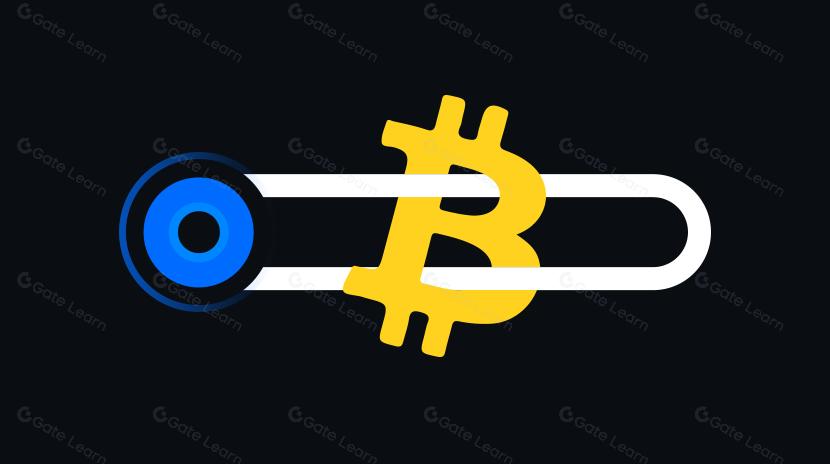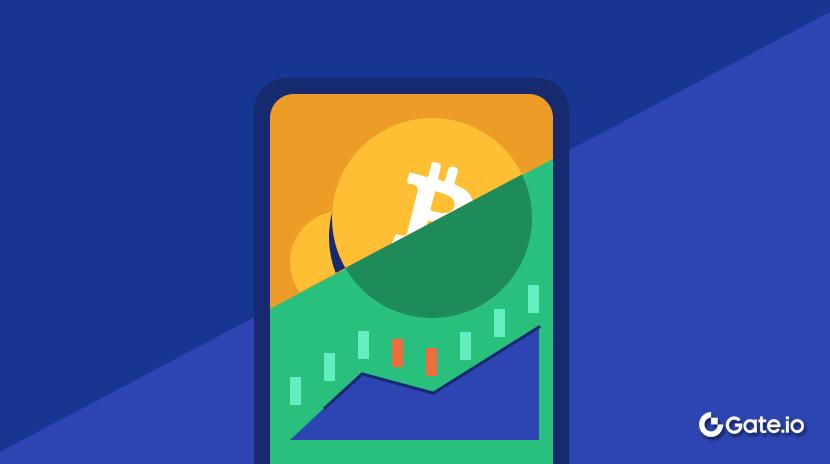如何精準識別並參與成功的空投項目?
深入剖析加密空投的演變與趨勢,回顧 Optimism、Arbitrum、LayerZero、ZKsync 等熱門空投案例,解析空投成功要素與反擼機制,並提供精準篩選優質空投的方法。前言
在加密世界,空投早已不像曾經的“錢是坐著等來的”的遊戲,而變成了項目方與用戶之間的博弈。在 Uniswap 開啟大規模空投五年後的今天,空投賽道早已天翻地覆——從層出不窮的空投項目到花樣百出的空投規則,從趕盡殺絕的女巫審查到被社區唾棄的項目老鼠倉。誰也不知道等待用戶的,是一頓簡單的豬腳飯、一個暴富的奇蹟,還是僅僅一場空虛的等待。
然而,面對層出不窮的空投項目,如何識別那些真正有潛力、能滿足空投預期的項目,是每位用戶的疑問。本文將帶你深入理解空投的本質與成功要素,並結合行業案例,精準識別下一個值得參與的優質空投。無論你是加密新手還是老玩家,都能在這裡找到屬於你自己的答案。
一、空投歷史起源與發展
“空投”(Airdrop)這一概念指的是項目方將免費代幣分發給特定用戶群體,以推廣新項目或獎勵早期支持者。這一方式最早可追溯至 2014 年 3 月,當時冰島的 Auroracoin 項目向全國公民免費分發代幣,每人最初獲得 31. 8 AUR,隨後增加到 318 和 636 AUR,旨在推廣該加密貨幣在冰島的使用。
隨著區塊鏈技術的逐步發展和 ICO 熱潮的興起,空投也經歷了不同的變革。
- 早期的空投階段,一切都還處於探索階段,空投幾乎沒有任何複雜要求,只需要一個錢包地址,用戶便能輕鬆領取代幣。(如:Stellar 在 2019 年進行了一次大規模空投,向全球的用戶分發了超過 12 億的 XLM 代幣)
- 然而,隨著流動性挖礦的崛起,用戶被流動性挖礦獎勵所吸引,TVL 的增長也伴隨著更加成熟的挖提賣策略。
- 隨之,Uniswap 空投的到來成為了空投新時代的開端。空投由此正式成為吸引用戶、融資和上市的關鍵手段,並催生了專門“擼空投”的玩家群體,他們在這一領域探索獨特的玩法。
- 但是,“擼毛黨”在經歷了 2024 年 ZKsync 和 LayerZero 等項目大規模反擼後,空投賽道迎來了短暫的冷卻期,然而,仍有許多“擼毛黨”在繼續探索有潛力的空投項目。
二、曾經的熱門空投項目
想要在如今捲到極致的空投市場中精準出手,就不得不回顧那些曾經紅極一時的空投項目。它們留下的不只是暴富的傳奇,更有寶貴的經驗與教訓。
2.1 陽光普照—Optimism
Optimism 是以太坊上的一個二層擴展網絡(Layer2),通過 Optimistic Rollup 技術,幫助以太坊實現更快、更便宜的交易。它可以大幅降低手續費、提升交易速度,同時保持以太坊主網的安全性。
而 Optimism 的空投規則,是非常很成功的空投案例。Optimism 主要將代幣空投給六類用戶:

(來源及詳細規則請查閱:Airdrop 1)
它的成功之處在於,根據用戶的活躍度和貢獻,拉開了非常明顯的差距:用戶鏈上行為越活躍,空投就拿得越多。此外,還有“疊加獎勵”設計,用戶交互程度越深、最終領取的空投就越豐厚。並且,整個發放過程是分階段進行的,這讓用戶始終保持參與熱情,真正把空投變成了激活社區和項目成長的利器。
這次空投事件,也為“擼毛黨”帶來了新的思路——深度交互的精品號和滿足最低要求的低保號。短暫使用 Optimism 的用戶會獲得少量空投,但如果長期深度使用 Optimism,獲得的空投數量將遠超僅交互幾次的低保號。而事實證明後續許多公鏈的空投規則,都在或多或少的模仿 Optimism 的空投模式。
2.2 空投大毛—Arbitrum
Arbitrum 同樣是一個基於以太坊的二層擴展解決方案,旨在解決以太坊主鏈交易速度慢、手續費高的問題。它採用 Optimistic Rollup 技術,將大量交易打包在二層處理,並將結果提交到以太坊主鏈,通過“樂觀假設”和 “欺詐證明”(Fraud Proofs) 機制保障安全。Arbitrum 具有高擴展性、低費用、與以太坊完全兼容的特點。
由於 Optimism 的致富效應,Arbitrum 在快照結束後的地址達到了近 230 萬個。為了更合理的分配空投,Arbitrum 延續了 Optimistic 對不同類型用戶的區分,但也增加了積分系統和更嚴格的女巫審查。根據 Nansen 數據,在近 230 萬個 Arbitrum 錢包地址中,僅有 62.5 萬個(約 28%)獲得了 3 分以上,成功拿到了 ARB 空投資格。剩下的大約 70% 地址被淘汰,其中真正因“女巫”(作弊地址)被剔除的只有 13.5 萬個,比例其實並不高。這次空投更像是在打擊那些只做一兩次交互的低保號,獎勵了那些高度活躍和持續操作的精品賬戶。Arbitrum 的空投規則如下:

(來源:推特殺破狼)
詳細規則請查閱:$ARB airdrop eligibility and distribution specifications | Arbitrum DAO - Governance docs
很多“擼毛黨”都是通過 Arbitrum 空投拿到了空投生涯第一桶金,而更多的人也正是在 Arbitrum 空投暴富的刺激下,正式踏上了“擼毛”的道路。直到現在,每當遇到項目“反擼”,小編都會忍不住想起當初那個慷慨的 Arbitrum 空投。
2.3 最嚴的女巫審查—Layerzero
LayerZero 是一種跨鏈通信協議,旨在實現不同區塊鏈之間的安全、高效互操作。通過提供一個統一的接口,LayerZero 允許不同鏈之間的資產、信息和消息流通,促進區塊鏈生態的互聯互通。
從 LayerZero 開始,2024的空投道路就開始走向了“反擼”的不歸路。由於 LayerZero 高融資和高估值引發了“擼毛黨”對空投的高預期。無論是個人用戶和專業工作室紛紛加入 LayerZero 的空投行動,社媒上也充斥著各種空投教程,使 LayerZero 鏈上單日交易筆數突破 20 萬。正是因為鏈上交易量和地址暴增,LayerZero 聯合創始人 Bryan Pellegrino 在宣佈快照後的次日(2024 年 5 月 3 日)啟動了史上最大的“獵巫”行動,用戶面臨三條選擇:一是主動披露女巫地址,確保在項目方篩查中被識別,從而保留 15% 的空投分配額度;二是等待項目方篩查,不主動報告女巫地址,完全依賴項目方的內部篩查機制,但這可能導致無法獲得任何代幣;三是引入舉報機制,用戶可舉報他人的“女巫”地址,成功舉報後,舉報者將獲得被舉報賬號 10% 的代幣獎勵。最終 LayerZero 官方沒收了原本應分配給女巫地址的 1000 萬枚代幣。儘管團隊尚未公佈最終的女巫名單,但根據之前的名單推斷,預計涉及地址數量不少於 100 萬個,這也成為至今為止史上規模最大的女巫數據庫。
LayerZero 的空投規則:
- 交易行為:交易次數、交易金額和交易類型(如流動性提供、NFT 轉移)都會影響空投資格。
- 早期用戶獎勵:早期活躍用戶將獲得額外獎勵。
- 協議費用貢獻:用戶支付的協議費用將被考慮在內,高費用貢獻者可能獲得更高的獎勵。
這次的獵巫行動被 LayerZero 的社區用戶詬病。許多用戶表示,可以接受其嚴格的女巫規則,但互相檢舉從長遠看一定是一個害人不利己的行為。LayerZero 利用人性,將“擼毛”變成了用戶與用戶之間的修羅場,而項目方卻坐收漁翁之利。
2.4 “老鼠倉”項目—ZKsync
ZKsync 是由 Matter Labs 開發的以太坊第二層(Layer 2)擴展解決方案,旨在通過零知識彙總(zk-Rollup)技術提升以太坊的交易吞吐量和降低交易費用,同時保持網絡的安全性和去中心化特性。
相較於 LayerZero,一開始就聽取社區的意見,保證代幣分配和獵巫行動的透明度。ZKsync 團隊在代幣分配過程中明顯缺乏社區共識,不僅忽視了用戶的反饋,還涉嫌通過內部地址預先佈局,形成明顯的利益傾斜。許多並未積極參與 ZKsync 生態的 NFT 持有者,如:Pudgy Penguins、Milady Maker、Degen 等,依然獲得了空投,且數量超過了許多積極參與的用戶。這些不符合標準的“空投領取者”使得實際用戶的獎勵份額被稀釋,引發大量用戶的不滿,社媒上充滿了維權的聲音,甚至 ZKsync 生態內的部分項目方也加入了維權的行列。
ZKsync 的空投規則:

(來源及詳細規則請查閱:ZK Airdrop | ZK Nation)
由於 ZKsync 項目這種不公平的分配使一部分“擼毛”的用戶逐漸對空投項目失去了信心,也使其從“天王”級別公鏈跌落成“天亡”級別公鏈。
三、如何挑選並參與合適的空投項目?
3.1 瞭解項目的基本信息
- 賽道分類:在分析具體項目時,歸類賽道,聚焦主流。先了解主流賽道,形成基本認知,再把生態的項目排序進行分析。
- 項目背景:確認項目後,要了解項目的核心理念、技術架構、路線圖。判斷其是否具備創新性,是否符合市場需求,並關注項目是否有獨特競爭優勢。
- 當前狀態:查看項目目前的開發進度、運營狀態以及是否有正式的發佈計劃。關注項目的階段(如初創、種子輪、開發期等),並確認項目的TGE 時間、節點計劃及經濟學細節等。
- 團隊身份核實:瞭解項目創始團隊的成員組成,核實其身份和工作經歷。調查團隊成員是否具有相關領域的經驗,以及是否有技術背景。
- 團隊行業聲譽:調查團隊成員在行業內的聲譽,是否在區塊鏈等相關領域有較高的認可度,是否參與過其他成功項目,或者是否曾經在重要的技術公司或投資機構任職。
- 歷史法律問題:特別需要注意是項目或成員是否有法律訴訟或不當行為,是否涉及欺詐或其他負面事件。
- 社媒賬號調查:對於改名或涉及過期賬號的項目,需仔細調查這些變更的原因和背景,尤其是涉及到已“歸零”或倒閉項目的推特歷史。
- 融資輪次與金額:調查項目是否已經完成融資,並且是否有知名的投資機構或天使投資人蔘與。確認項目的融資情況,包括融資的總額、參與的投資機構、融資階段(如種子輪、A 輪、B 輪等)。
- 估值分析:基於項目的技術能力、團隊背景及融資情況,進行初步的估值分析。可以參考項目的種子輪融資金額、當前市場需求、同類項目的市場估值等來做合理預測。
- 對標賽道項目:通過對比行業內其他類似項目的估值情況,分析該項目在同一賽道中的競爭力。瞭解同類項目的市場反饋及用戶的興趣程度,確定項目對應價值。
核心思路:在分析項目時,首先歸類其賽道,瞭解項目的亮點,核實團隊成員的身份,分析市場的活動思路,特別是要有項目方視角,多角度多維度探索。
3.2 確認項目空投機會
- 任務內容的參與成本:像銀河任務這種只需要關注推特、加入 DC 等社交活動,其成本相對較低且參與門檻不高;測試網交互則需要安裝特定的錢包、進行交互等,難度稍高。而涉及到主網的交互,通常才是獲得“大毛”的首要因素。
- 獎勵預期與風險:計算獎勵與成本的比例,有助於評估潛在收益和風險。
- 活動的持續時間和參與人數變化:評估項目的持續時間和參與人數動態變化,可以幫助預測任務的熱度和可能的獎勵分配變化。
- 項目是否明確承諾獎勵:如銀河任務和測試網交互,是否給出了明確的獎勵方式、預期收益和分配規則。
- 活動開始和結束的時間節點:確定任務的起止時間,幫助評估是否值得投入時間參與,避免錯過關鍵時間窗。比如銀河任務和測試網交互都明確了參與時間,這對於參與者決定是否參與很重要。
3.3 如何最大程度上獲得空投收益
- 打造精品賬戶:
精品賬號顧名思義就是擁有有優質行為的真實賬戶,每個號具備真實用戶的鏈上行為、獨立行為、合理的鏈上資產分佈、甚至一定額度的gas費消耗。主要關注的點包括:資金留存,鏈上活躍度,資產的多樣性,鏈上身份,對項目的忠誠度,主網數據等等,來提高賬戶的“畫像”。因為在部分項目中,賬戶活躍度會影響到未來空投的分配或者其他機會的概率。總而言之平時的真實賬戶會有什麼操作,精品號就要有一樣的操作。
面對項方明確獎勵內容的活動,像是銀河任務、測試網和節點測試等等,根據活動的要求進行交互測試即可。
而面對沒有具體活動要求的項目,可以參考學習曾經熱門空投上項目的規則進行交互。總結來說主要是兩個維度:時間跨度和交互金額。
- 進行多號操作:
多賬號策略的核心在於風險分散,主要目的是防止單個賬號無法獲得空投或被判定為女巫的風險。但需要強調的是,多賬號操作並不等同於女巫攻擊。相反,只要做到合理隔離,多賬號策略的風險其實是可控的。其本質遵循大數法則和廣覆蓋原則,即通過多個賬號參與,提高整體成功概率。相比之下將全部資源投入單個賬號,可能面臨更高的不確定性,收益也未必優於多賬號策略。
在起號階段,需要遵循基本的資金流轉原則,確保賬號的合理性和差異化。首先,資金來源應儘量多樣化,避免所有賬號在同一時間、同一方式注入資金,以降低被標記的風險。此外,避免大額集中出入金,堅決避免將多賬號的資金存入同一地址,使資金流動更加自然。同時,交互時間和金額應保持隨機化,避免機械化操作,從而減少被識別的可能性。多鏈佈局也是關鍵,讓賬戶在不同鏈上留下真實用戶痕跡,使其更加自然可信。
進入養號交互階段後,每個賬號都應保持獨立行為,避免同一時間批量操作。交互過程中,應隨機化金額、交易順序,並組合不同的協議,以避免流水線式操作。持續拓展多鏈佈局,使交互路徑儘量獨立,提高賬號的可信度。此外,通過持有不同資產、參與 DAO 投票、NFT Mint、DeFi Staking 等方式,提升賬號權重,塑造高質量用戶畫像。最後,在交互時結合 DeFi 策略,進行嵌入式交互,讓 Gas 費用真正用在刀刃上,提高整體收益與安全性。
- 避免女巫:
在空投規則中,“女巫”指的是利用非正常手段批量獲取空投的行為。項目方查女巫通常以“保護社區”為由,因此不要抱有僥倖心理,認為不會被篩查。
如果你的賬戶曾涉及以下行為,建議儘快開始交互新的賬號:
- 已知的女巫名單:曾被 HOP、ZZ 、L0 等項目方列入歷史女巫庫的地址,可能會被直接排除。
- 交互模式異常:如多個錢包的交互行為高度相似、順序固定,或只與項目相關協議進行交互,都會增加被識別的風險。
- 資金流動異常:如果多個錢包間存在資金分發、歸集等明顯的批量操作痕跡,容易被判定為女巫行為。
- 地址聚類分析:項目方會利用聚類算法和社區檢測技術,通過交易圖分析,篩查可能的女巫地址。
結語
未來,空投市場仍將不斷演變,無論是留給擼毛用戶的大毛還是留給項目方 PUA 時間都已經不多了。盲目參與只會浪費時間和成本,而精準出手才是制勝關鍵。深入研究項目背景、關注行業趨勢、掌握項目方的分配邏輯,才能在越來越複雜的空投規則下搶佔先機,避免被‘反擼’,來真正實現收益最大化。希望這篇文章能幫助你在空投的世界裡少走彎路,精準捕捉下一個潛在的財富密碼。
相關文章

由幣安實驗室支持的必試專案,提供額外權益質押獎勵(包括分步指南)

每個加密貨幣交易者都應該知道的前 5 種圖表模式

什么是加密货币保险?

Tronscan(波場瀏覽器)是什麼,2025年如何使用?

